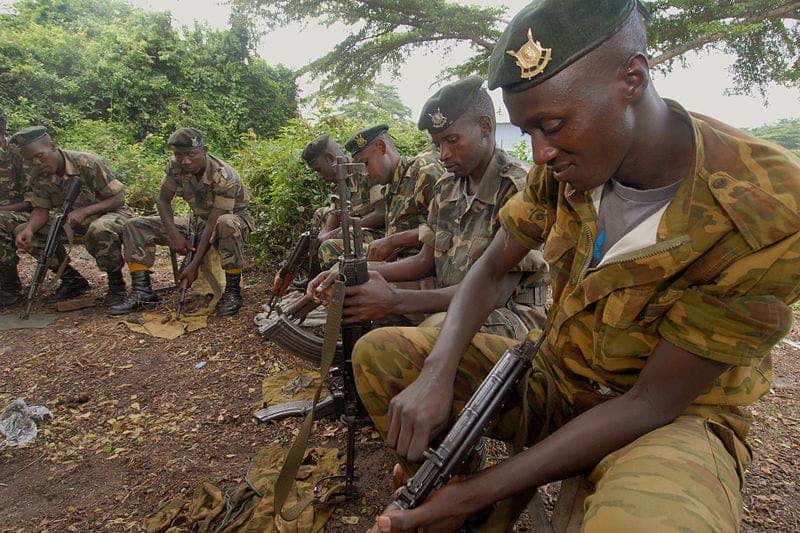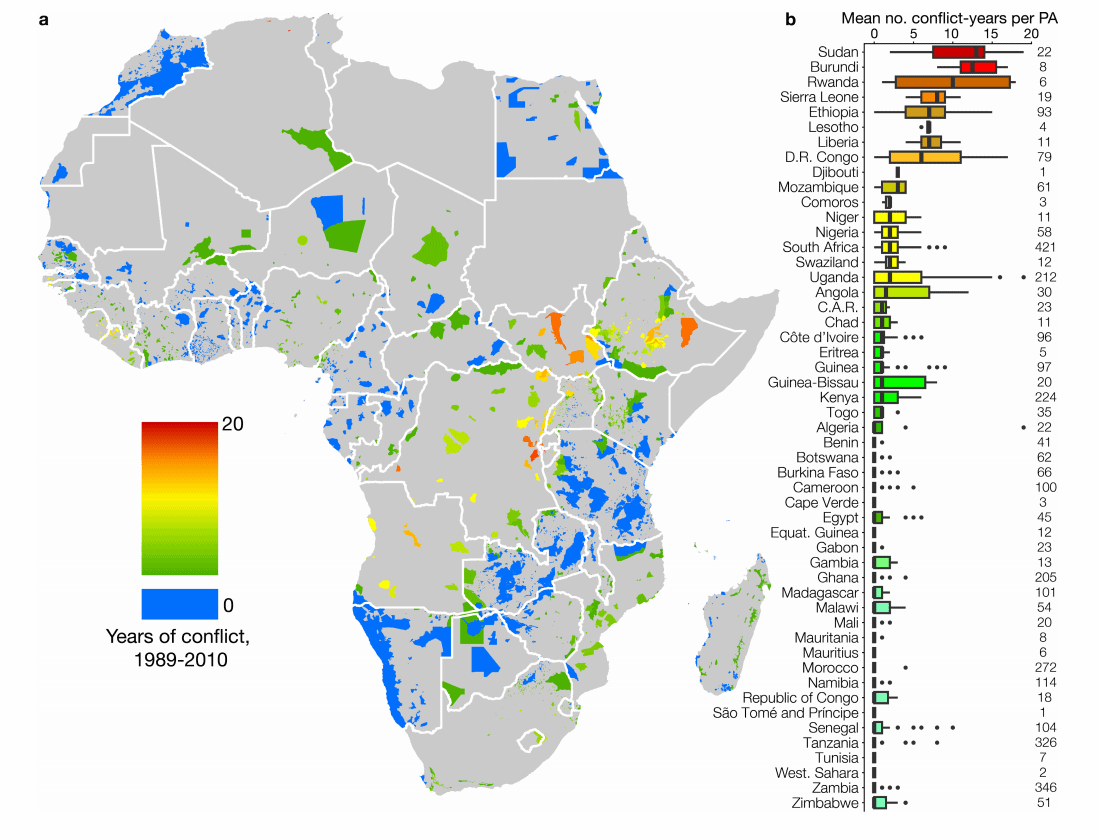
Studies that analyze biodiversity decline often explain outcomes in terms of habitat loss, overhunting or reproductive health. Now, a new study finally dispels uncertainty around one persisting factor that skews conservation planning: armed conflict.
According to American researchers at the University of Princeton, “conflict frequency was the single most important predictor of wildlife population trends,” highlighting the significant impact war has on, not only human populations, but wildlife as well. On the upside, the authors found that animal populations in war-torn areas can often recover, as long as “rapid interventions” are made following ceasefires.
Wildlife: the overlooked casualties of war
Joshua Daskin and Robert Pringle, both conservation ecologists at Princeton, studied the effect of armed conflict on 253 populations of large herbivores in protected areas across Africa. Though ecological data from armed conflicts is scarce, the researchers were able to analyze data collected between 1946 and 2010. Conflict was extensive during this period, occurring in 71% of protected areas. In fact, between 1950 and 2000, more than 80% of wars overlapped with biodiversity hotspots, which overwhelmingly occurred in in Africa and Asia, a previous study found.

Before the researchers embarked on their study, it was unclear whether there was any relationship between armed conflict and biodiversity outcome, though the effects of war on wildlife have been documented at the local level — and these effects aren’t always negative.
Some of the most striking negative effects war has on wildlife include the use of toxic chemicals, bushmeat hunting by soldiers, ivory trade to finance military activity, and the weakening of institutions with a role in wildlife protection. But war can also have a positive impact by relaxing the pressure people put on wildlife or due to the decline of extractive industries.
The generalized, large-scale assessment performed at Princeton, however, suggests that the net effect war has on wildlife populations is largely negative. Wildlife population trajectories declined as conflict frequency
increased while those in peaceful protected areas were generally stable. Some of the populations affected include those of iconic endangered species, such as the elephant, hippopotamus, lesser kudu, and others.

According to the researchers, the frequency of conflict was the single most important predictor of wildlife population trends, more so than drought, resource presence, urban population density or corruption. Conflict intensity was the least important predictor.
“The greater explanatory power of conflict frequency relative to conflict intensity suggests that the mere occurrence of conflict, irrespective of its human death toll, was sufficient to diminish wildlife populations. Accordingly, we hypothesize that the effects of socioeconomic upheaval and livelihood disruption associated with conflict outweigh the direct effects of military activity,” the authors wrote in the journal Nature.
Bearing in mind the impacts conflict has on wildlife, the authors recommend that conservation organizations enact “pre-conflict contingency planning, maintain a presence during conflict, and use post-conflict windows of opportunity to enact biodiversity-friendly policy change in collaboration with humanitarian relief organizations.” Though there is no published assessment that might support the efficacy of such measures, post-conflict rehabilitation initiatives in Mozambique’s Gorongosa National Park and Rwanda’s Akagera National Park, for instance, are anecdotally known to enhance conservation outcomes.
It is a depressing fact that animals have to suffer and even risk extinction simply due to the misfortune of standing in the crossfire of human conflict. Sadly, the African continent is still plagued by war and will continue in this state for the foreseeable future.
Still, there is some hope for improvement. In 2014, Africa experienced more than half of worldwide conflict incidents, despite having only about 16 percent of the world population. However, the absolute number of conflicts worldwide has greatly decreased, and Africa is far more peaceful than it was, for instance, during the chaotic post-Cold War days in 1990. The twelve African countries that experienced armed conflict in 2014 are clustered along an arc stretching from northern Mali through southern Algeria and Libya into Egypt.






